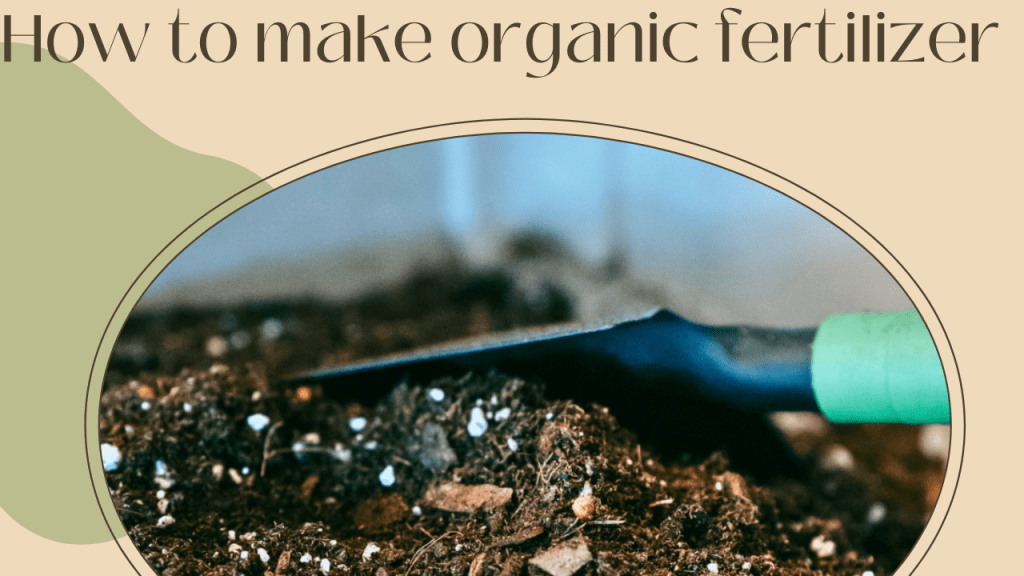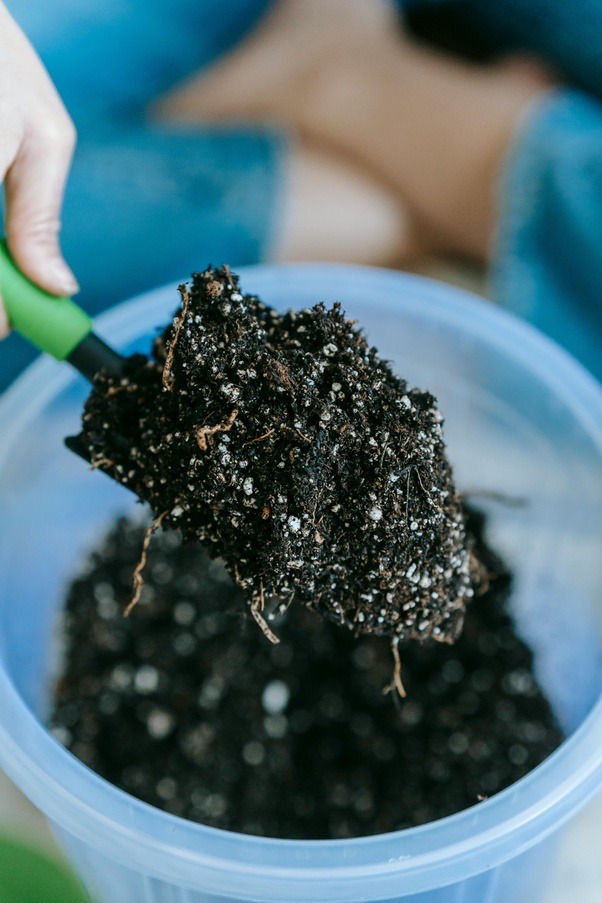As indoor gardening becomes increasingly popular, choosing the right fertilizer is essential for maintaining healthy and vibrant plants. Organic fertilizers offer a natural and sustainable way to nourish indoor plants without harmful chemicals.
In this comprehensive review, we will explore the best organic fertilizers for indoor plants, how to make your own organic fertilizers, and provide real product examples from personal experience.

Understanding Organic Fertilizers
What are Organic Fertilizers?
Organic fertilizers are derived from natural sources such as plants, animals, and minerals. Unlike synthetic fertilizers, which are manufactured using chemical processes, organic fertilizers enrich the soil with essential nutrients in their natural form. This not only provides plants with the necessary nutrients but also improves soil health and promotes a more sustainable gardening practice.
Organic fertilizers come in various forms, including compost, manure, bone meal, and fish emulsion. Each type offers a unique combination of nutrients that benefit indoor plants in different ways. For instance, compost is rich in organic matter that improves soil structure, while bone meal provides a high phosphorus content essential for root development.
Benefits of Using Organic Fertilizers
There are numerous benefits to using organic fertilizers over synthetic alternatives. First and foremost, organic fertilizers improve soil structure by increasing its ability to retain water and nutrients. This is particularly important for indoor plants, as potted soils can become compacted over time.
Moreover, organic fertilizers promote microbial activity in the soil, which enhances nutrient availability and plant health. Unlike synthetic fertilizers, which can cause nutrient imbalances and harm beneficial soil organisms, organic fertilizers work in harmony with the natural ecosystem.
Another significant benefit is the slow release of nutrients provided by organic fertilizers. This ensures that plants receive a steady supply of essential elements over time, reducing the risk of nutrient burn and promoting sustained growth. Additionally, organic fertilizers are environmentally friendly, as they reduce the risk of chemical runoff and pollution.

Types of Organic Fertilizers
Organic fertilizers can be categorized into several types, each with its unique benefits:
- Compost: Made from decomposed organic matter, compost enriches the soil with a wide range of nutrients and improves its structure.
- Manure: Animal manure, such as cow or chicken manure, is rich in nitrogen and other essential nutrients. It’s an excellent choice for boosting soil fertility.
- Bone Meal: High in phosphorus, bone meal supports strong root development and flowering in plants.
- Fish Emulsion: Derived from fish waste, this liquid fertilizer is rich in nitrogen and other trace elements. It’s ideal for promoting leafy growth.
- Seaweed Extract: Packed with micronutrients, seaweed extract stimulates plant growth and enhances resistance to stress.
Each of these fertilizers offers distinct advantages, making it important to choose the right type based on your plants’ specific needs.
How to Make Organic Fertilizer at Home
Composting Basics
One of the easiest and most effective ways to create organic fertilizer at home is through composting. Composting involves the decomposition of organic matter, such as kitchen scraps and yard waste, into nutrient-rich humus that can be used to fertilize plants.
To start composting, you’ll need a balance of green and brown materials. Green materials, such as vegetable scraps and grass clippings, provide nitrogen, while brown materials, like dried leaves and cardboard, supply carbon. Maintaining proper moisture and aeration is crucial for successful composting. Regularly turning the compost pile helps accelerate decomposition and prevents odors.
Personally, I have been composting kitchen scraps for years, and the resulting compost has significantly improved the health of my indoor plants. The process is straightforward and rewarding, transforming waste into valuable fertilizer.
DIY Liquid Fertilizers
DIY liquid fertilizers are a convenient way to provide your indoor plants with essential nutrients. These fertilizers are easy to make and can be applied directly to the soil or as a foliar spray. Common DIY liquid fertilizers include compost tea and banana peel fertilizer.
To make compost tea, simply steep finished compost in water for a few days. This liquid extract contains soluble nutrients that can be quickly absorbed by plants. Banana peel fertilizer, on the other hand, is rich in potassium. Soak banana peels in water for a few days, and use the resulting liquid to water your plants.
I often use compost tea for my indoor plants, and I’ve noticed a marked improvement in their growth and vitality. It’s an excellent way to give plants a quick nutrient boost.
Using Kitchen Scraps
Repurposing household waste is a simple and cost-effective method to create organic fertilizer. Items such as coffee grounds, eggshells, and vegetable scraps can be used to nourish plants. Coffee grounds are rich in nitrogen, making them ideal for leafy plants. Eggshells provide calcium, which is essential for cell wall development. Vegetable scraps can be composted or used to make liquid fertilizers.
For example, I regularly add crushed eggshells to the soil of my potted plants, which has helped prevent blossom end rot and improved overall plant health.
Best Organic Fertilizer Recipes
Compost Tea Recipe
Ingredients:
- 1 part finished compost
- 5 parts water
- A bucket
Steps:
- Fill the bucket with water.
- Add the compost to the water.
- Stir the mixture and let it steep for 3-5 days.
- Stir the mixture daily to ensure proper aeration.
- Strain the liquid and use it to water your plants.
Benefits: Compost tea provides a balanced mix of nutrients and beneficial microbes that enhance plant growth and soil health.
Banana Peel Fertilizer Recipe
Ingredients:
- Banana peels
- Water
- A jar or container
Steps:
- Cut the banana peels into small pieces.
- Place the pieces in the jar and cover them with water.
- Let the mixture sit for 2-3 days.
- Strain the liquid and dilute it with water before using it to water your plants.
Benefits: Banana peel fertilizer is rich in potassium, which promotes healthy root development and flowering.
Eggshell Fertilizer Recipe
Ingredients:
- Crushed eggshells
- A mortar and pestle or a blender
Steps:
- Clean and dry the eggshells.
- Crush the eggshells into a fine powder using a mortar and pestle or a blender.
- Sprinkle the powder on the soil around your plants.
Benefits: Eggshell fertilizer provides calcium, which is essential for strong cell walls and overall plant health.

Best Organic fertilizers for indoor plants
Espoma Organic Indoor Plant Food
Espoma Organic Indoor Plant Food is a liquid fertilizer that provides a balanced mix of nutrients. It is designed to promote healthy growth and vibrant foliage in indoor plants. The product is easy to use, requiring simple dilution with water before application.
I have been using this product for my indoor garden, and my plants have never looked healthier. The convenience of a liquid formula combined with its effectiveness makes it a favorite in my home.
Dr. Earth All Purpose Fertilizer
Dr. Earth All Purpose Fertilizer is a versatile option suitable for a variety of indoor plants. It contains a blend of organic materials, including fishbone meal, kelp meal, and alfalfa meal, that promote vigorous growth. The slow-release formula ensures a steady supply of nutrients over time.
I particularly appreciate the inclusion of beneficial microbes in this product, which enhance soil health and nutrient uptake.
Jobe’s Organics Fertilizer Spikes
Jobe’s Organics Fertilizer Spikes offer a convenient way to nourish plants. These slow-release spikes are inserted into the soil, providing a consistent supply of nutrients over several weeks. They are especially useful for busy gardeners who may not have time for frequent fertilizing.
The spikes have been a game-changer for my indoor plants, ensuring they receive the nutrients they need with minimal effort on my part.
Application Tips for Organic Fertilizers
Frequency and Amount
Finding the right balance in fertilizing frequency and amount is key to maintaining healthy indoor plants. Over-fertilizing can harm plants, causing nutrient burn and stunted growth, while under-fertilizing may result in nutrient deficiencies.
As a general rule, it’s best to start with a smaller amount of fertilizer and gradually increase it as needed. Monitoring plant response helps determine the optimal feeding schedule.
Seasonal Adjustments
Indoor plants have different nutrient needs throughout the year. During the active growing season, typically spring and summer, plants require more nutrients. In contrast, during the dormant period in fall and winter, their nutrient needs decrease.
Adjusting fertilization schedules according to the growing season helps plants thrive. For example, I increase the frequency of fertilizing my indoor plants during the spring and summer months when they are actively growing.
Monitoring Plant Health
Keeping an eye on your plants’ health is essential for timely and effective fertilization. Regularly inspecting plants for signs of nutrient deficiencies, such as yellowing leaves, stunted growth, and poor flowering, allows for early intervention.
If I notice any signs of nutrient deficiencies, I adjust my fertilization routine accordingly to address the issue promptly.
Common Problems and Solutions
Over-Fertilization
Over-fertilization is a common problem that can cause significant damage to indoor plants. Signs of over-fertilization include browning leaf tips, wilting, and nutrient burn. Reducing the amount of fertilizer and flushing the soil with water can help alleviate this issue.
I once over-fertilized my spider plant, resulting in burnt leaf tips. By flushing the soil with water and reducing the fertilizer amount, I was able to revive the plant.
Under-Fertilization
Under-fertilization can be just as detrimental as over-fertilization, leading to nutrient-deficient plants. Symptoms of under-fertilization include yellowing leaves, slow growth, and poor flowering. Increasing the frequency or amount of fertilizer can address this problem.
To prevent under-fertilization, I ensure that my plants receive a balanced and consistent supply of nutrients.
Pests and Diseases
Using organic fertilizers can attract pests and diseases if not managed properly. Ensuring that compost is fully decomposed and avoiding over-watering can help mitigate these issues.
To manage pests, I use organic pest control methods, such as neem oil and insecticidal soap, to keep my indoor plants healthy.
Personal Recommendations and Final Thoughts
Having experimented with various organic fertilizers, both homemade and commercial, I’ve found that each type offers unique benefits. Compost tea and banana peel fertilizer are my go-to homemade options for a quick nutrient boost. Espoma Organic Indoor Plant Food and Jobe’s Organics Fertilizer Spikes are reliable commercial products that have consistently delivered excellent results.
For beginners, I recommend starting with simple DIY fertilizers and gradually exploring commercial options to find what works best for your plants. Remember, the key to successful indoor gardening is to listen to your plants’ needs and adjust your fertilization routine accordingly.